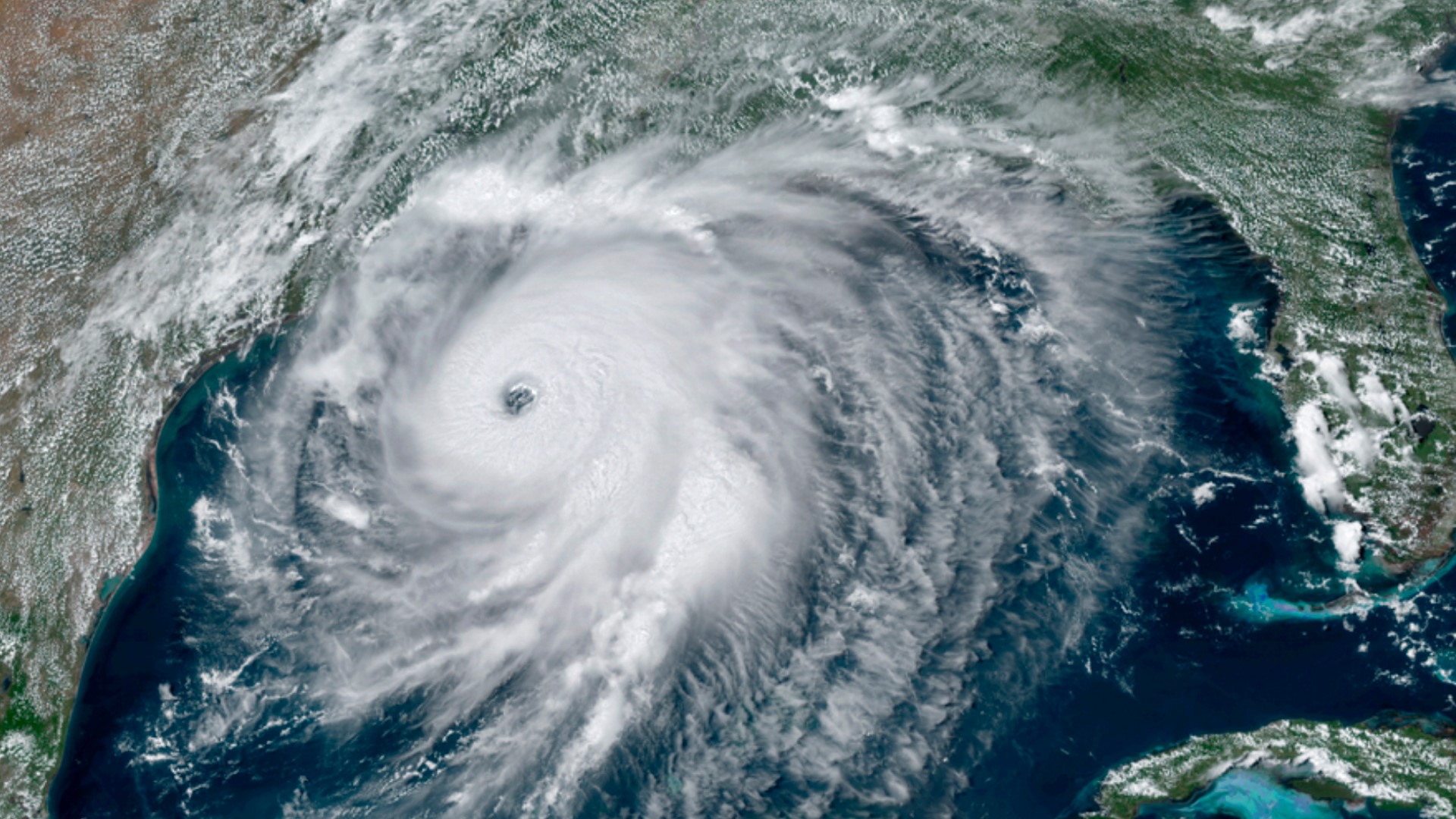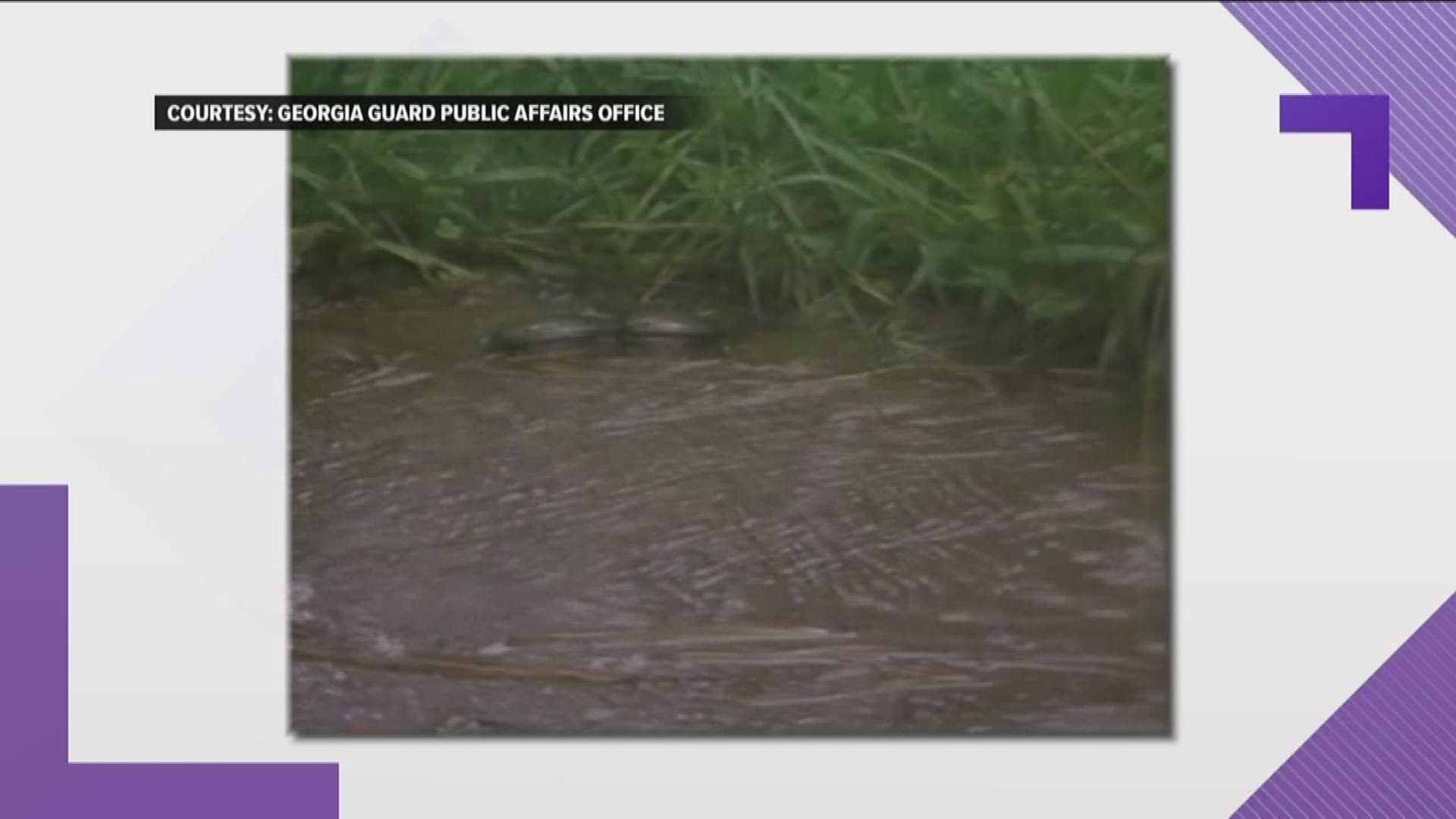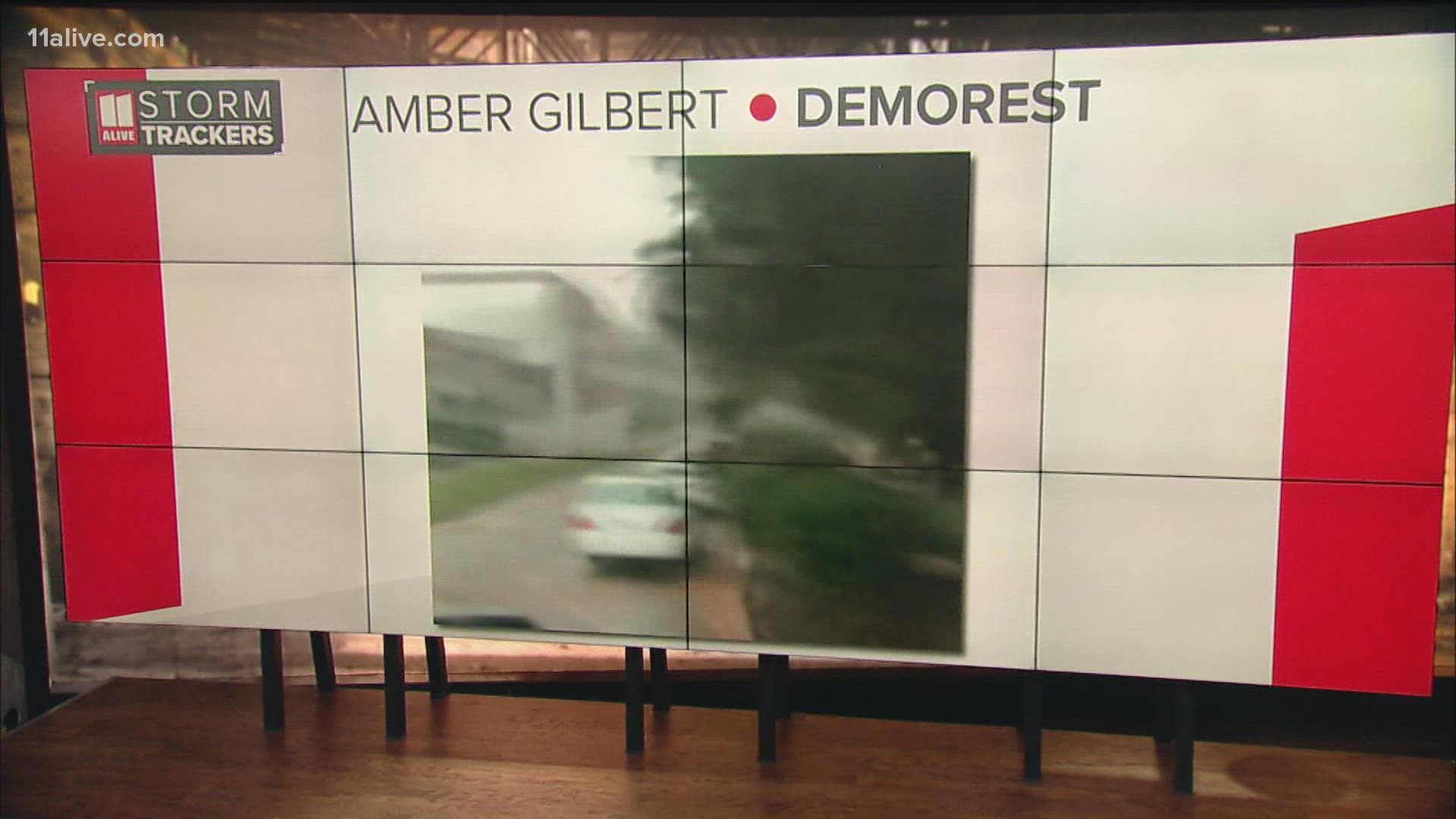ATLANTA — Atlanta sits 230 miles away from the Georgia coastline and more than 250 miles away from 30A on the Emerald Coast of Florida. But if you've lived in Atlanta or north Georgia for any number of years, you know we are still impacted by landfalling tropical systems more years than not.
During the record hurricane season of 2020, the Peach State was impacted by the remnants of Sally, Delta, and Zeta. The impacts from Hurricane Zeta were the most significant of the three, with widespread power outages that lasted for days in many parts of the metro.
Analyzing the data since 1950, there have been 32 named storms whose paths came within 100 miles of Atlanta. But tropical storms and hurricanes are much larger than just 100 miles across. So, in north Georgia, it's important to remember to always be hurricane-ready each summer and fall.

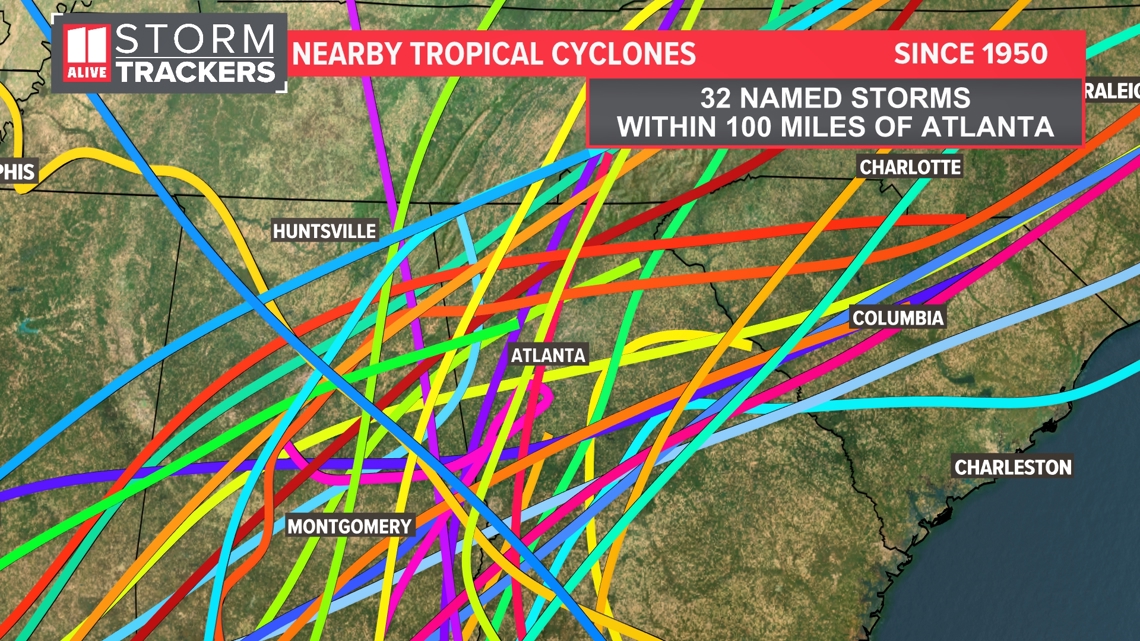
Impacts from landfalling tropical systems can stretch for hundreds of miles inland. In north Georgia and metro Atlanta, residents experience three main threats from landfalling tropical systems: damaging winds, flooding rains, and tornadoes.
Damaging wind threat
As a hurricane moves inland, it loses its available energy from the warm waters of the ocean or Gulf and gradually weakens. So, although Atlanta may not see hurricane-force sustained winds, the city can experience tropical storm conditions with some landfalling systems.
There have been many storms through the years that downed trees and power lines, like Opal in 1995. But a much more recent example of this impact from tropical systems is Zeta from October of 2020.
Power outages around the metro were widespread, and it took several days for the power to be restored. At the peak, more than 1 million outages were reported across the area.
Heavy rain and flood threat
Tropical systems bring deep, tropical moisture with them and can produce impressive rainfall rates that last for hours.
In some cases, rain totals could exceed double-digit totals in parts of North Georgia, like in 1994 from Tropical Storm Alberto. Although not a hurricane, Alberto slowly trudged through southern Alabama to west Georgia, then looped back westward.
Over this multi-day journey, it brought immense rain amounts to western Georgia. The maximum rainfall was over 27 inches in Americus, Georgia. But half a foot rain totals were found on the southwest side of the Atlanta metro as well. Many roads and bridges were closed and damaged. Up until Michael in 2018, Alberto was the costliest tropical system for the state of Georgia.
Tornado threat
North Georgia's tornado threat from tropical systems usually happens when storms make landfall along the Gulf of Mexico and track north or northeastward somewhere near or just northwest of our area.
Tornadoes usually occur in the outer rain bands of the storm, often in the right front quadrant, where the most wind shear and instability are present. They are usually brief and weak but can still cause damage.
Many past storms have produced numerous tornadoes in the area. In 2021, the remnants of Fred spawned 7 tornadoes across the area.
Some past storms have produced even more. Katrina, in 2005, was responsible for 18 tornadoes across North Georgia.
Usually, tornadoes from tropical systems are weaker, EF-0 or EF-1. During Katrina, 3 of the 18 tornadoes that touched down in Georgia were rated E-F2s.
When is Hurricane Season?
The Atlantic Hurricane Season runs from June 1 through November 30 each year. However, when we look at the frequency of tropical systems, we see a large spike between August and October, with the 'peak' of hurricane season hitting September 10.

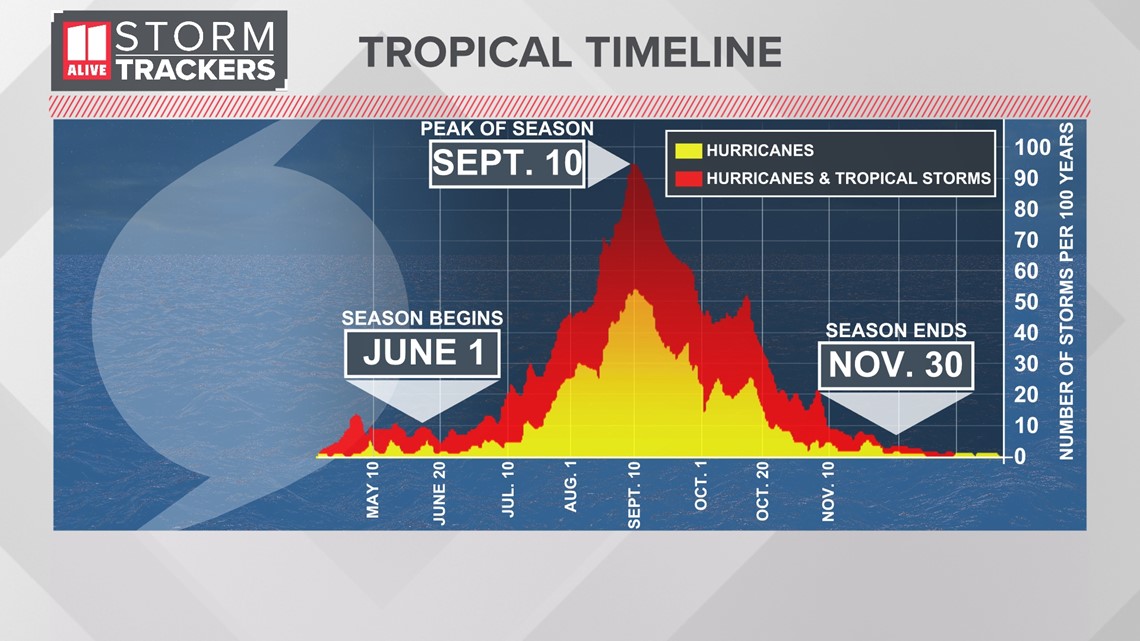
What to expect this year?
We are coming out of El Niño and into a La Niña phase of the El Niño Southern Oscillation for the peak of the 2024 season. For this reason, we expect a much more active than normal season.
NOAA will release its hurricane forecast later this month. Colorado State University released its initial forecast last month, calling for a very active season.

